More recently, on the other side of the conflict, data on the Bryansk pogrom was “declassified.” This is when, in a very short period of time, the Ukrainian Armed Forces shot down two Russian planes and three helicopters. This creation will be dismantled to its bones in the very near future, but now we will touch the edge of it. And let’s talk about the need for such a phenomenon as an electronic warfare aircraft in the aviation system of the Aerospace Forces. But let’s go from the other side, or rather, not from where they don’t exist, but from the other side of the globe, where just such planes are a given.
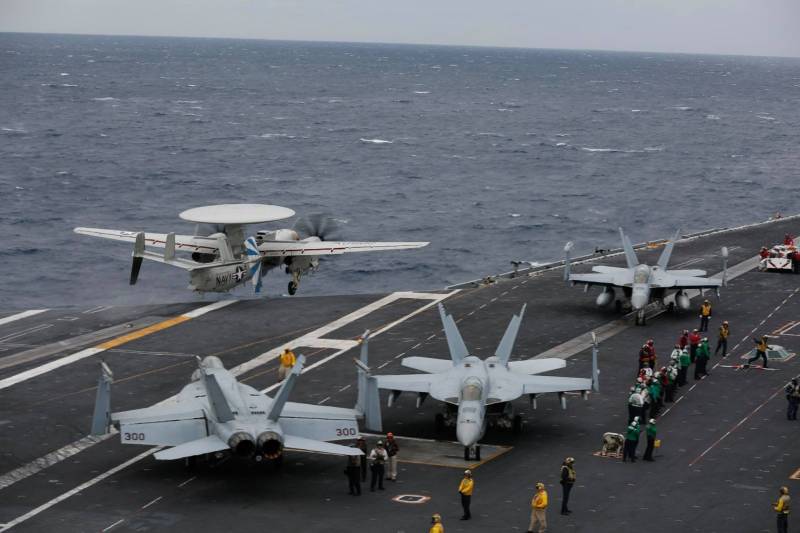
What is an electronic warfare aircraft anyway? Nothing special, just a plane into which they stuffed and hung a bunch of electronic equipment, which can receive signals from enemy radars of various kinds and, if necessary, provide assorted interference to these radars.
In general, aircraft of this type appeared quite a long time ago, but we will take the last 50 years. This is precisely the time of the dawn of radio electronics and everything connected with it.
Our first hero of the story is “The Thief” or Grumman EA-6 “Prowler”
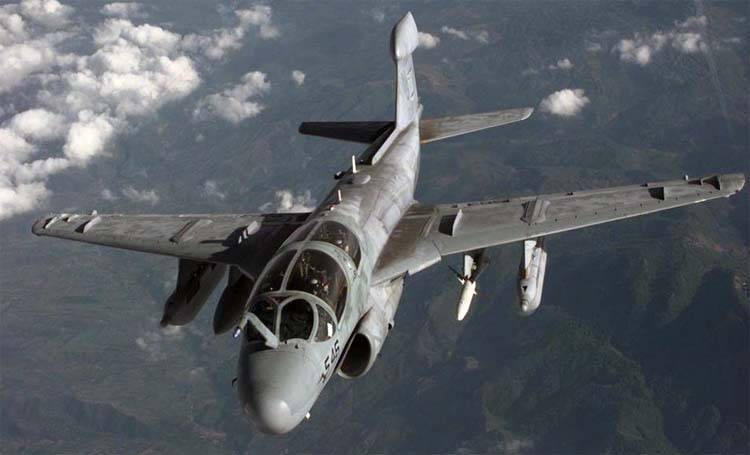
Designed on the basis of the A-6 “Intruder” attack aircraft for the needs of the American fleet and the Marine Corps, the aircraft was manufactured in the amount of 170 units. The Vor differed from the Burglar in its longer hull (almost 2 meters), which made it possible to increase the crew to 4 people – a pilot and three operators. They sat there, of course, like sprat in a jar.
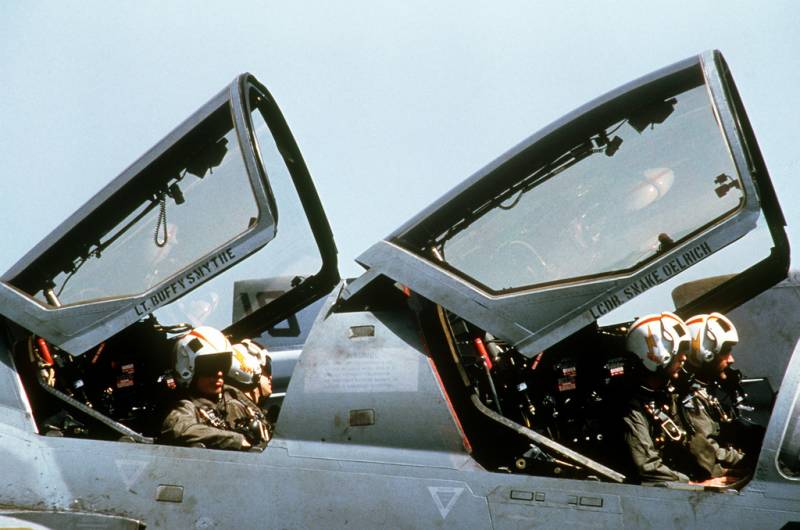
The aircraft made its first flight in 1968, and in 1971 it was put into service, from where it was retired only in 2018. 47 years of service is more than decent.
The radio-electronic equipment included a very decent set:
– AN/ALP-42 radio signal receiver, which ensures the operation of two jamming systems – AN/ALQ-99 and AN/ALQ-126. The data from the receiver was processed by the on-board computer, which already gave a signal to the suppression systems;
– AN/ALQ-92 station for electronic suppression of enemy radio communications and, above all, for suppression of radio control systems of enemy air defense fighters;
– personal protection station AN/ALQ-126, which produces response-pulse interference and disrupts the automatic tracking of the target by the control radar weapons and electronic homing heads of the enemy to protect the EA-6B aircraft itself;
– group protection system AN/ALQ-99 Tactical Jamming System (TJS), which can operate in one of three modes: automatic (detection, identification, selection of electronic jamming objects and operating modes of jamming transmitters are carried out without operator participation), semi-automatic (targets for electronic jamming is selected by the operator) and manual (the operator himself assesses the electronic situation and determines the jamming mode).
This splendor was also connected to a defense system with ANALE-29A and -39 machine guns, which shot out dipole reflectors, infrared traps or disposable jammers. True, the shooting was carried out manually by crew members.
In the late 1980s, the Thieves were modernized under the ADVCAP program.
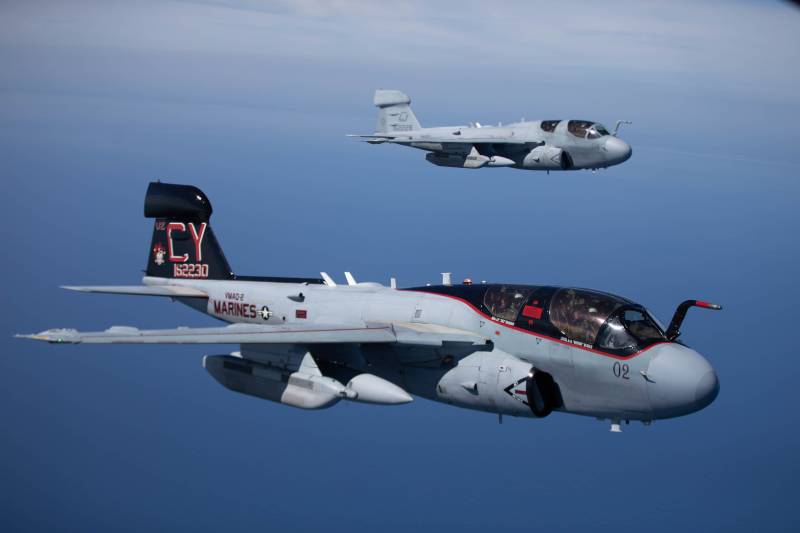
A new AN/ALE-39 jamming station, passive tracking and signal suppression systems were installed. The aircraft received new LCD screens, a more powerful radar, a digital autopilot and an AN/ALQ-19 communications system.
13/03/2019 The US Marine Corps decommissioned the last EA-6B “Prowler” aircraft. From that moment on, US Marines were left without personal aviation EW.
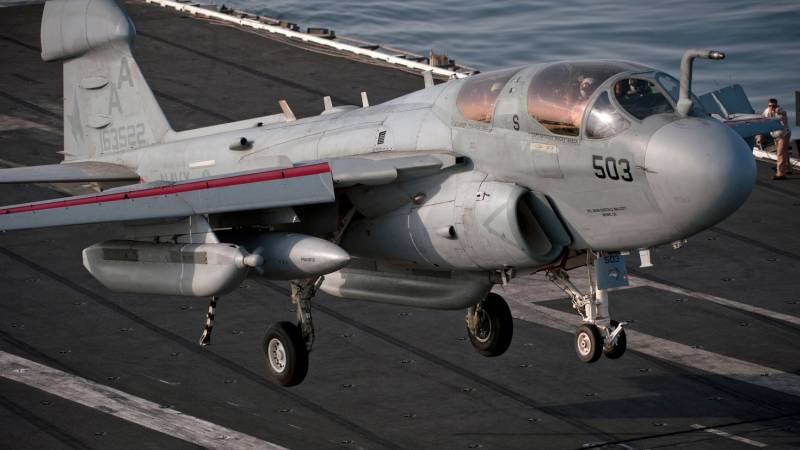
In the future, the Marine Corps is counting on electronic warfare modifications of the F-35B, but this is a rather difficult question.
The next number on the program was “Raven”
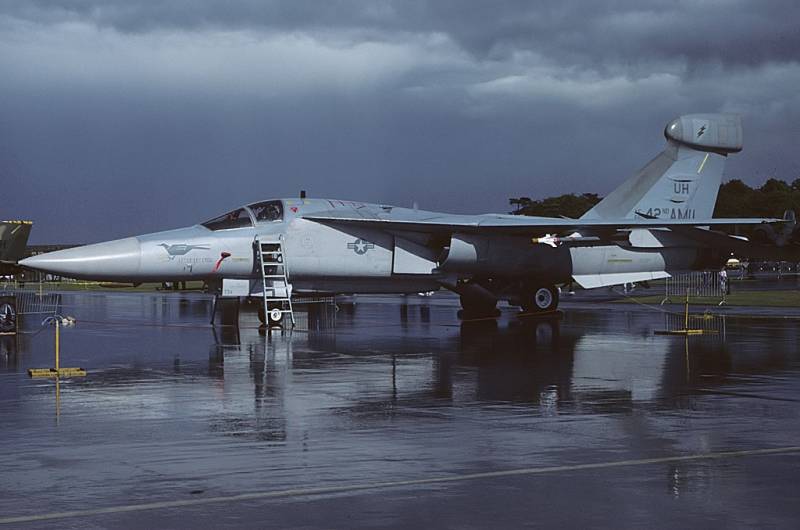
General Dynamics/Grumman EF-111A Raven, created for the needs of the army. Released in the amount of 42 units.
The F-111A tactical bomber was taken as the basis. The EF-111A is designed for invasion operations into enemy territory and for escorting attack aircraft such as the F-111A. The tasks were somewhat different from covering landing support aircraft, therefore a tactical bomber served as a base, not an attack aircraft. A different duration of stay in the air, a different flight range.
The basis of the EF-111A’s avionics was the AN/ALQ-99E jamming system. It is 70% similar to the EA-6B “Prowler” system. But besides this, the EF-111 was also equipped with other electronic warfare equipment, fortunately, the aircraft compartments made it possible to do this.
More modern avionics and automation of many processes made it possible to reduce the crew compared to the EA-6 from four to two people.
The AN/ALQ-99E system includes ten jammers, which are perfectly located in the bomb bay, and five master oscillators. The receiver antennas were placed in a fairing on the fin, giving it a unique appearance.
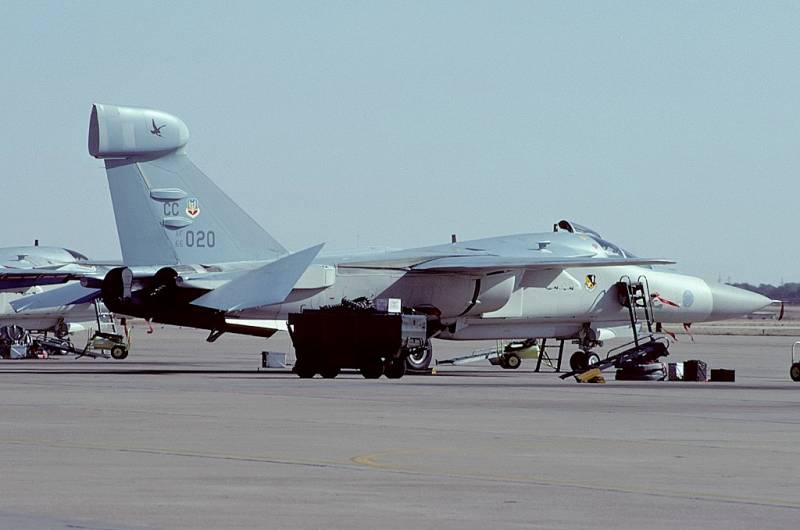
For self-defense, the Raven received an AN/ALQ-137(V)4 jamming system, AN/ALR-23 and AN/ALR-62(V)4 electromagnetic radiation warning receivers, an AN/ALE IR trap and dipole reflector scattering system -28. The presence of a self-defense complex allows in some cases to do without turning on the main electronic warfare system. To power all this splendor, it was necessary to install two additional electric generators with a capacity of 90 kVA.
At the same time, the “Raven” was not equipped with the types of weapons we are familiar with – guns or missiles. It was believed that there would be a sufficiently high speed (although let’s just say that it did not shine in this regard – 900 km/h) and suppression systems. Controversial, but true: for participation in many operations (Yugoslavia, Serbia, Iraq) not a single EF-111 was shot down.
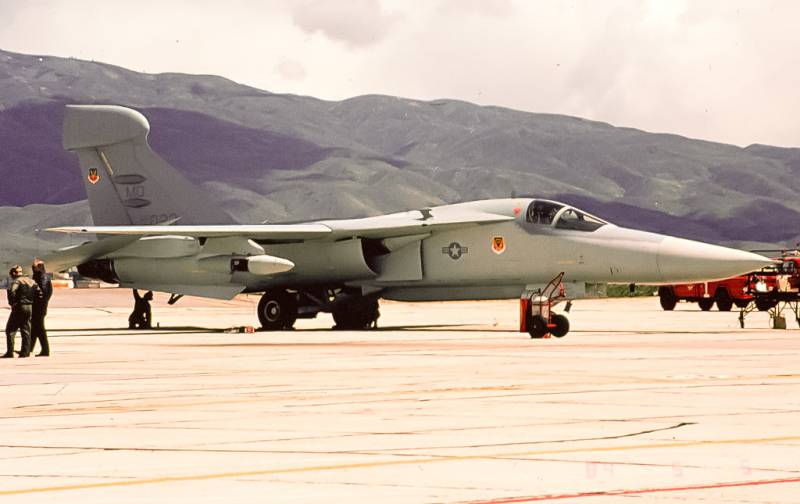
The last time the EF-111A was used was in February 1998 during Operation Desert Thunder – massive raids by the US Air Force and Navy on military-industrial facilities in Iraq.
Boeing EA-18 “Growler”
And, finally, the latest achievement, the highlight of the program, the Boeing EA-18 “Growler” is a carrier-based electronic warfare aircraft of the US Navy, developed by Boeing on the basis of the F/A-18F “Super Hornet” fighter, which replaced the EA-6B Prowler.
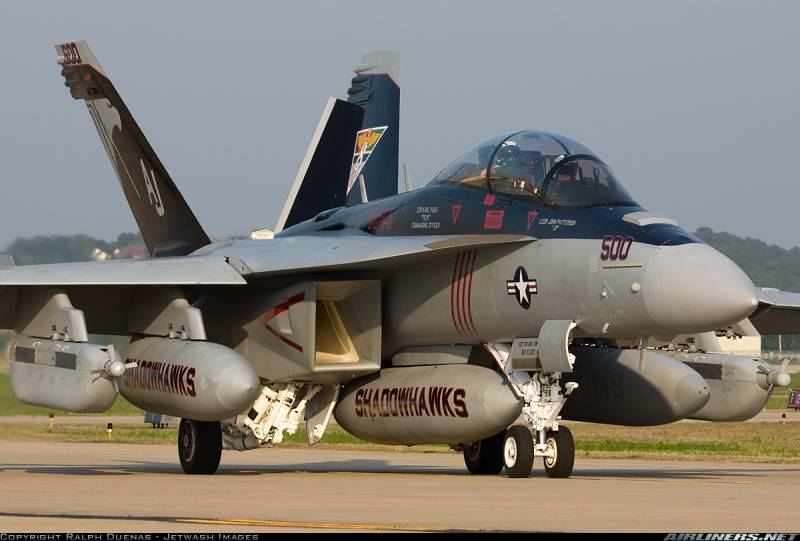
The first flight took place on August 15, 2006. Serial production started in 2007. The first combat use was in March 2011, during the military operation “Odyssey Dawn” in Libya. It proved to be a very effective weapon in those conditions.
The EA-18G aircraft is designed to conduct electronic reconnaissance, jamming enemy radars and communications systems, and destroying detected radars with its HARM anti-radar missiles. The aircraft is capable of operating both autonomously and interacting with other aircraft and UAVs in a single information field, that is, it is a “network-centric” aircraft.
The receiving antennas of the AN/ALQ-218(V2) electronic warfare system are installed on the wingtips of the Grumpy, the same antennas are installed on both sides in the forward part of the fuselage, in the area of the engine compartments and in the rear part of the fuselage, ensuring the reception of electromagnetic signals from any angle, providing almost all-round visibility in both hemispheres, upper and lower.
Instead of a gun, a complex for jamming radio communication systems AN/ALQ-227(V)1 CCS from Raytheon is installed. The complex is capable of detecting and determining the parameters of radio transmissions, and the suppression is carried out by the AN/ALQ-99 broadband low-frequency transmitter. A controversial decision, since the ALQ-99 also worked on the EA-6 “Thief” in container versions. Let’s face it – mechanical antenna drives and a tube transmitter base can only be justified by a huge desire to save money.
True, today development is already underway on a new container-type jamming station – Next Generation Jammer. Everything there is serious and modern, solid-state element base and AFAR antennas, excluding mechanical drive altogether.
In the promising jamming station, it is planned to use only solid-state element base, and mechanical drives will be completely excluded.
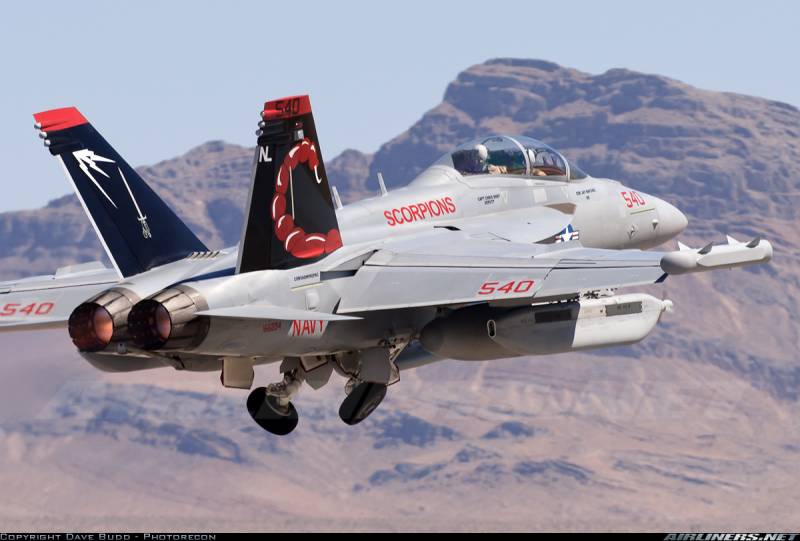
An important and interesting feature of the Grumpy is the INCANS, INterference CANcellation System, which provides stable VHF communication between the EA-18G crew and ships and aircraft when the jamming equipment is turned on. The crews of previous electronic warfare aircraft did not have such an opportunity. In addition to INCANS, the Grumpy has on board the MATT, Multi-mission Advanced Tactical Terminal satellite communications system.
In standard weapons, the ALQ-99 jamming system is suspended in containers. Instead of end wing pylons for AIM-9 missiles, removable containers with antennas of the AN/ALQ-218 system are installed.
“Grump”, unlike “Crow”, is by no means unarmed. It is quite capable of fighting off the enemy with two AIM-120 AMRAAM air-to-air missiles and attacking enemy radar with two AGM-88 HARM anti-radar missiles. In further upgrades, it is planned to expand the armament with JSOW, JASSM and IDECM air-to-surface missiles.
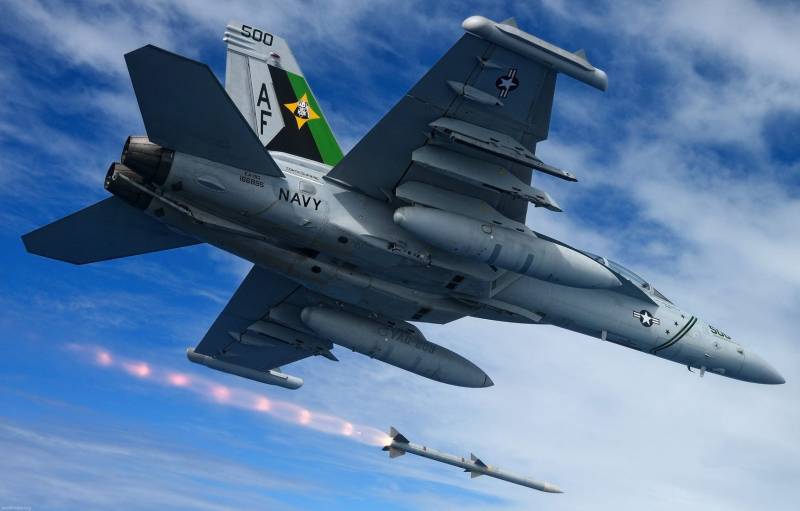
The Navy plans to equip ten combat squadrons (one in each air wing, five aircraft per squadron), three expeditionary squadrons and one training squadron with EA-18G aircraft. It was planned to purchase 88 aircraft, but in 2001 the order volume was increased to 114 EA-18G due to the decision to equip expeditionary squadrons operating from coastal airfields as part of various “peacekeeping” forces with these machines.
The Grumps received their baptism of fire at the end of 2010 in Iraq. In combat operations against the Iraqi Air Force and Air Defense, the EA-18G, according to reports from the US Department of Defense, was recognized as a very effective weapon. However, despite being rated “operationally effective,” the aircraft was also rated “not operationally suitable.” That is, the EA-18G is capable of effectively performing its assigned tasks, but is not suitable for use in the field.
“Grump” was also used in Libya. There have been no specific descriptions of the EA-18G’s performance, but in various statements senior US Navy officials have made references to the EA-18G’s performance. The “Grunts”’ support for the actions of American aviation was especially noted, which was apparently expressed in the suppression of the work of the Libyan air defense systems “Osa” and “Crotal”.
In general, the presence of continuity is observed. And it is clear that for the next 15-20 years, American aircraft will be covered when carrying out combat missions by electronic warfare aircraft, with all the ensuing consequences.
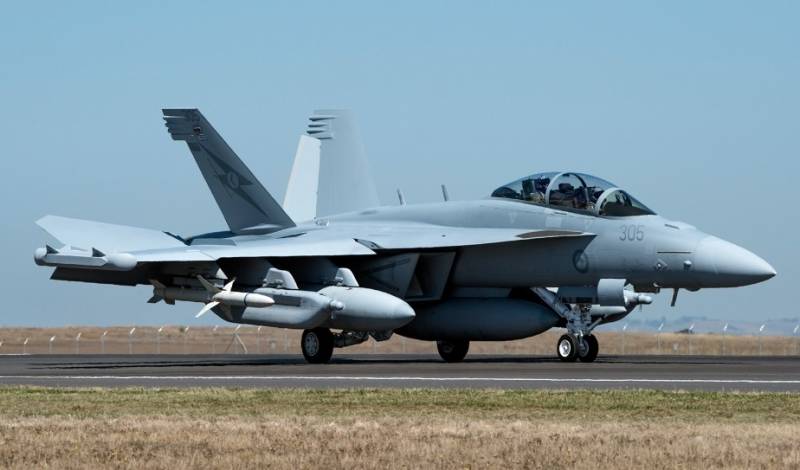
What is the general usefulness of such aircraft, I think, it’s not even worth disassembling. Everything lies on the surface.
Just imagine the picture: a squadron of the same F/A-18 “Super Hornets” is coming to introduce democracy in yet another part of the world. And with them, at some distance, the Grumpy EA-18G is flying and its jamming stations are working so hard that they’re red-hot. Result? Obvious. Enemy radars will receive interference, missiles will be thrown off course. Not 100%, but still. They will.
You say: who is stopping ordinary aircraft from hanging containers with electronic warfare? How are our Khibiny?
Let’s put it this way: “Khibiny” is an auxiliary weapon that reduces (and significantly) the weight of fuel and weapons taken on board. That is, it is at least not a plus. Well, it’s better to read about the effectiveness of “Khibiny” by Russian pilots somewhere in the Telegram. At least that time, near Bryansk, somehow the Khibiny were not up to par in the literal sense of the word.
Total: the US Navy, and as it became clear from the latest plans, the US Army on distant shores, has a new electronic warfare aircraft, which they made on a run-in airframe of a very decent aircraft. The main strike weapon of American aircraft carriers. And this aircraft will accompany fighter-bombers and attack aircraft on their raids, jamming enemy radars and hitting them with anti-radar missiles.
And here the question arises: why don’t we have such an aircraft?
In general, there were attempts… however, it’s somehow impossible to call them successful. In the Soviet Union, work was underway to create an electronic warfare aircraft. With varying success, but they were carried out.
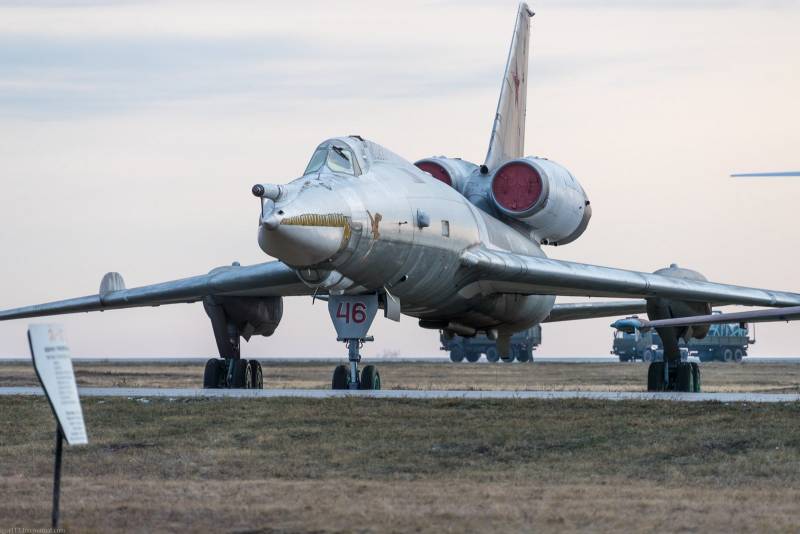
The Tu-22P was developed and 47 units were built. Adopted into service in 1965. Three modifications depending on the jamming station complexes used (“Bouquet-4”, “Klyukva”, “Fasol”).
Almost simultaneously with the Tu-22P, the Tu-16P operated, which was produced in an even larger series – about 90 copies.
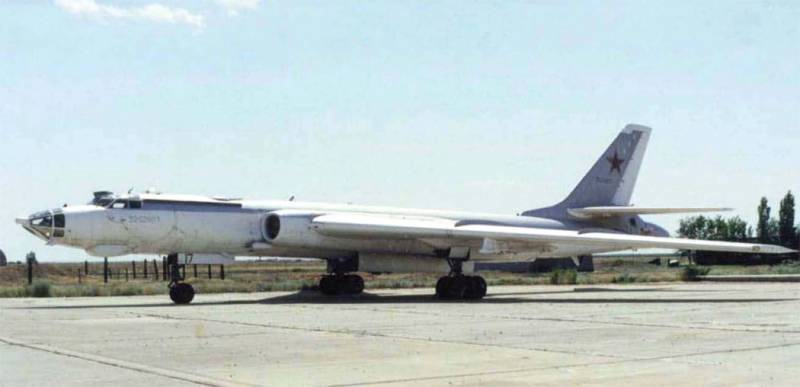
Tu-16P and Tu-22P carried the most powerful jamming system in the world, “Bouquet-4,” which required a burst of energy and weighed so much that it required such aircraft. But at that time there was no escape from the “Bouquet” for any radar in the world.
In the same 60s, an aircraft such as the An-12PP was developed. Some of the cars (27 pieces) carried the same “Bouquet”, some (19 pieces) were equipped with the “Lilac” set, which is not as demanding in terms of operating conditions as the lamp “Bouquet”.
And in 1968, the very last of the Yak-28 family, the Yak-28PP electronic warfare aircraft, flew.
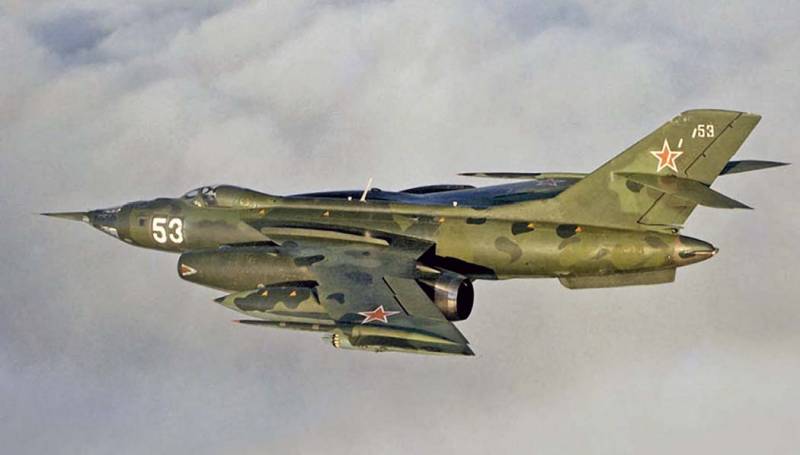
It was a very interesting car, produced in 84 copies and served until 1993 in Russia and until 1994 in Ukraine. A little short of reaching the thirty-year mark in service, the Yak-28PP left a very good memory of itself, although it did not work “in combat”: in Afghanistan the Mujahideen did not have radars, there was nothing to put pressure on. But the plane was not delivered for export.
The most interesting thing is that the Yak-28PP carried all the kits that were at the disposal of the airborne electronic warfare forces: “Fasol-1”, “Lilac”, “Bouquet”, “Strela”.
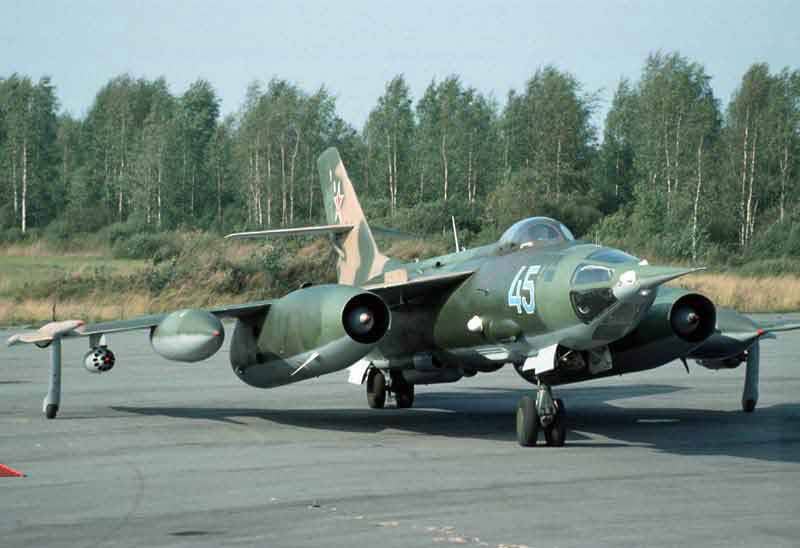
Moreover, the Yak-28 was much more effective in operation than the Su-1983MP, which appeared in 24.
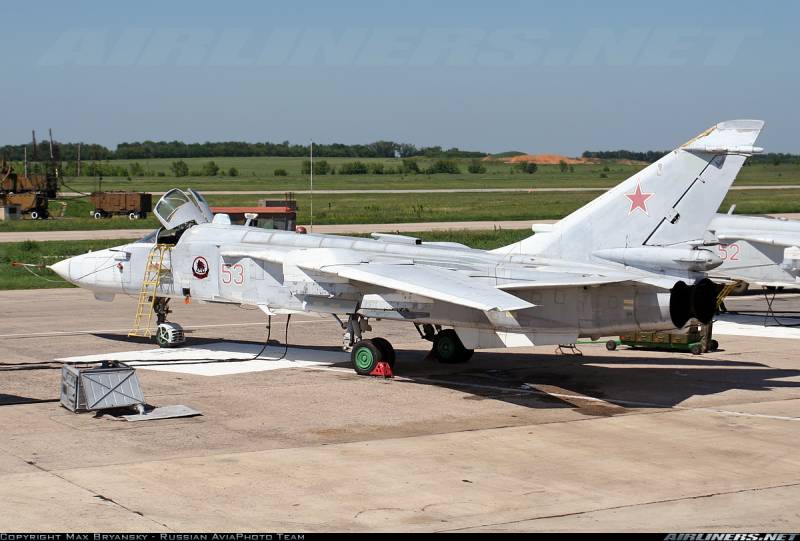
Su-24MP, the latest attempt by Soviet designers to create an electronic warfare aircraft. About 20 copies were produced, half of which were “forgotten” in Ukraine during the division of the Soviet heritage.
An interesting aircraft, with an interesting and still classified “Lily of the Valley” kit, in which the creators took all the best from the “Beans” and “Mimosa” kits. Alas, “Lily of the Valley” was not brought up to condition, and with the collapse of the USSR there was no time for it at all. And it was also not possible to rearrange the equipment from the Yak-28PP, which had exhausted its service life, due to the peculiarities of its placement.
And in general, that’s all… As they say – what are you rich in…
Oh yes, I forgot. There is the great and terrible Il-22PP “Porubshchik”, an aircraft capable of selectively suppressing everything, from geese to satellites.
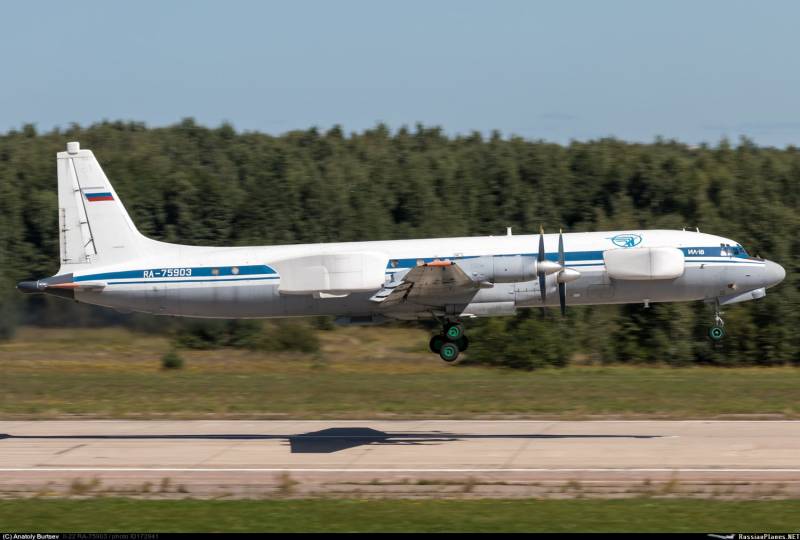
It was created on the basis of the Il-20, which, in turn, was based on the Il-18, an aircraft first flown in 1968. And the most recent of these aircraft, on the basis of which new projects were created, was manufactured in 1976.
This is how we live – the latest and (probably) expensive equipment is stuffed into a glider that is almost 50 years old.
I understand our ancestors who built the first electronic warfare aircraft based on strategic and long-range bombers. The equipment on the lamps required space in full, but what, in those same years, the Americans, who were ahead of us in microelectronics, were also quite mastering bombers in this regard. Not as big, but still.
Today the world is not the same as it was 50 years ago; a lot is changing. The need for electronic warfare fully manifested itself during the SVO, and actually countering the enemy’s electronic systems became an extremely important task. It’s one thing to “knock out” a drone that’s dragging a mine on a sling, and another thing to neutralize enemy air defense systems.
Air defense really wins; aviation cannot play such an important role as in other wars. Rockets, alas, have become smarter, more accurate and faster. Need an answer. As an option, there really is an electronic warfare aircraft that will cover attacking bombers and confuse enemy missiles. Rely on the magic of the Khibiny… no, this system itself is frankly rather weak and weakens the combat capabilities of the aircraft.
Why can’t we follow the path of the Americans and adapt something from the existing arsenal to such tasks as an electronic warfare aircraft? Not as ancient as the Il-22, faster so that you can actually escort planes?
In the Bryansk region, yes, in that tragedy, why did the planes stay in the square for so unforgivably long? And they waited for the electronic warfare helicopters until they rumbled. We waited…
No, the Mi-8/Mi-17, stuffed to the roof with equipment, is good in its time and place. But not in the matter of escorting modern aircraft.
But today we have quite normal aircraft, at the expense and with the help of which all problems can be solved! These are two-seaters, so that the pilot controls the plane, and the operator takes care of the situation.
MiG-31? No, it won’t do. Too big and too fast. And this is not a task for him. In general, these aircraft must be protected like the apple of your eye.
Su-34? Theoretically, yes, but this plane is already needed like I don’t know what. Every “duckling” is very needed, and it would be wrong to divert production areas.
And what? That’s all? No, here it is, the solution to the problem – the Su-30!
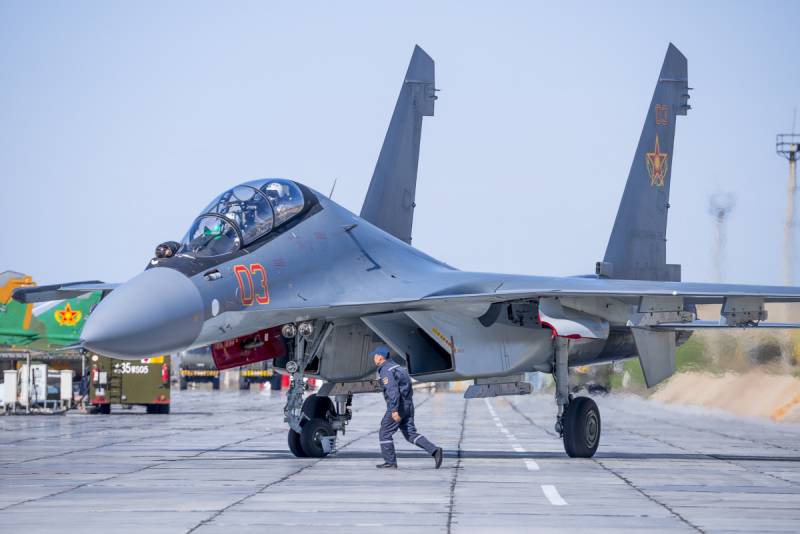
A large, heavy two-seat fighter capable of solving all problems. Two engines can easily provide power generators for electronic warfare equipment. Two seats for the crew, just the operator in the back, so as not to distract the pilot, this is not a Su-34, the tasks are completely different. 8 tons on slings – that’s enough to accommodate containers with equipment, and there will be room for missiles. Out with the gun, in with the antenna unit.
And not necessarily the Su-30SM. Any of the previously created models for India or China will do. But such an aircraft can easily go together with the Su-35 to extinguish air defense radars or with the Su-34 to blow everything else into smoke. And he himself will be able to send missiles at someone if necessary.
And it will, by all means, be a completely modern, high-speed and high-altitude aircraft, not like the fifty-year-old Il-18, of which only three have mastered it. Su-30s with containerized electronic warfare weapons can be built tomorrow, and the day after tomorrow they can begin their very useful work.
The Americans have “Grumpy” for the next 20 years. The EA-18 is almost no different from the F/A-18. Who is stopping us from repeating the example of the Americans? Especially considering that our plane is at least no worse than the American one? And our KRET is definitely no worse than their Ratheon.
When I watched with what gusto our jingoistic patriots threatened to chop the entire NATO world into cabbage with the “Chopper,” frankly, it was funny. Yes, three aircraft that are fifty years old with the latest equipment are powerful! Flying at a speed of 600 km/h.
Somehow, our Su-18PP, created in the image and likeness of the EA-30G “Growler,” will be at least no worse, and considering what our wizards from KRET can create, they may turn out to be better than American aircraft.
There is something to think about and work on.





